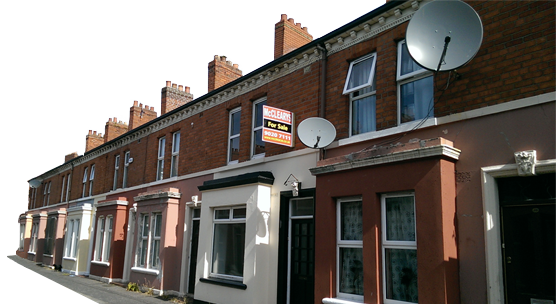What is the safe distance of trees to buildings?
How tree roots damage property and cause subsidence
The problem when looking for the safe distance of trees from a building is that the answers vary according to who you ask. Differing opinions are often offered by insurers or their specialist subsidence claims handlers (who tend to take a cautious approach), to tree societies, suppliers of saplings and nurseries (who might assume a level of knowledge, skill and maintenance which might not be realistic).
When planting a tree, the eventual size of the tree is the main factor to consider along with the type of property you live in. If a tree is going to grow to a 20 metre monster, you shouldn’t plant it 10 metres from the building as it is very likely to cause problems in the future by damaging your foundations, take much of the natural light from your garden and you (or a future occupier) may end up having to remove it at considerable expense.
Young trees are frequently planted too close to a property without any thought to the eventual size and the regular maintenance which will be required to keep it to a sensible and appropriate size. Bear in mind also the nature of your subsoil and how the additional a tree to this soil will affect it. Clay soil will experience substantial contraction as moisture is removed, causing the ground in which your foundations are supported to subside and the foundations themselves to crack and suffer differential movement. Also, different tree species consume varying amounts of water through their root system. For example, a mature willow tree will draw between 50 and 100 gallons of water per day from the ground around it, having a minimum recommended distance from buildings of 18m, but a birch tree, having a far smaller root system, may be planted far closer to a property without danger of damage.

Is there a rule of thumb?
None of the various methods of calculating likely root spread are 100% accurate, although by using them in combination you should get a reasonable idea.
Bear in mind that many trees establish over 60% of their absorbing root system beyond the drip line.
Using tree height
Roots can commonly extend a distance of two and a half times the height of the tree. However, differing opinion places this figure at 1.5 times, and up to 3 times the height.
Using canopy spread
Measure canopy spread (the reach of the branch and leaf canopy of the tree), of which the root system can reach 2-3 times the drip line.
Using trunk diameter (excluding conifers, pines and very large or old trees)
For young, growing trees, root spread fairly consistently reaches 38 times the trunk diameter.
However, this rule has only been substantiated in trees of up to 20cm trunk diameter.
How to identify a tree
When requesting a buildings insurance quotation, you may be asked for the tree type. Unfortunately, not many of us are experts. Here is a really useful tool for identifying different trees
Older trees
There is evidence that as trees mature and age, the root spread levels off as the tree uses its resources to maintain the existing structural root system and develops more efficient absorbent roots within the established area.
Foundation depths and the age of your house
In a pre-1950’s property the foundations are likely to be shallower than modern houses, many only about 50cm (20inches) deep and thus far more likely to be affected by smaller changes caused by moisture variation in the site (the ground in which they are supported) which is caused by tree root growth if the tree is too close to the building.
Building regulations again changed in 1978, requiring more substantial foundations to be dug, but there is no guarantee that even a new building will stand up to the immense pressures nature can exert.
Managing the height of your tree
If you plant a tree with a view to controlling its eventual height because it is situated closer to your building than the mature tree should be sited, bear in mind that as years pass, this commitment can grow into an expensive and essential regular undertaking for the entire life of the tree. It is far better to avoid this issue by planting sensibly in the first place.
Existing trees and ground heave
Removal of existing trees is often seen as an immediate remedy to any future potential subsidence issue. However, you should note how old the tree is before proceeding or ground heave – just as damaging to your property, can result.
If the existence of a mature tree pre-dates your house, the water balance in the soil might be reliant on the moisture being removed continually by the tree roots. Should the tree be removed, the soil can swell up with the additional moisture it is now absorbing, causing your property to be literally torn open from the ground up.
Ground heave is very difficult to predict and requires careful soil management. It is one of the reasons why professional advice should be sought when considering removal of problematical trees as ground heave could potentially increase damage to your property. Pollarding a tree is often the best choice when managing an existing large tree to prevent ground heave but prior to taking any action you should take professional advice from a qualified arborist or surveyor.
Neighbour’s trees close to your property but on somebody else’s land
A tree on neighbouring land is just as likely to damage your home as one on your own ground. Trees don’t respect legal boundaries and you should be aware of this potential risk. If a neighbour (or the local council) owns a tree neighbouring your land, but over which you have no direct control, which causes you concern, you still need to take action.
By law, it is the responsibility of the tree owner to ensure that it causes no danger to neighbouring properties, even if they were built after the tree was already established.
Therefore, if a tree on adjacent land causes you concern, you should write to the owner, justifying your concern and requesting that they ensure the tree is maintained regularly by a professional to avoid potential damage to your property. Furthermore, you should give notice that should damage occur to your property which has been caused by the tree, you (and your insurers) will hold them responsible for the cost of remedy.




